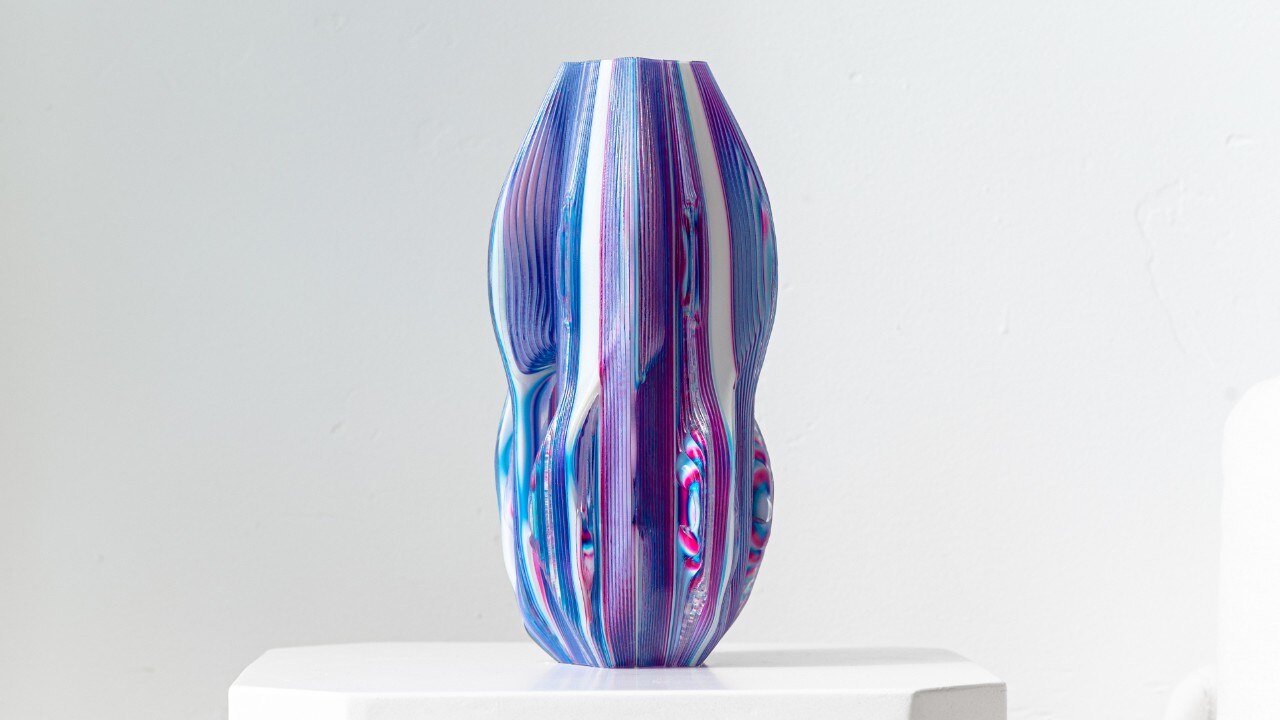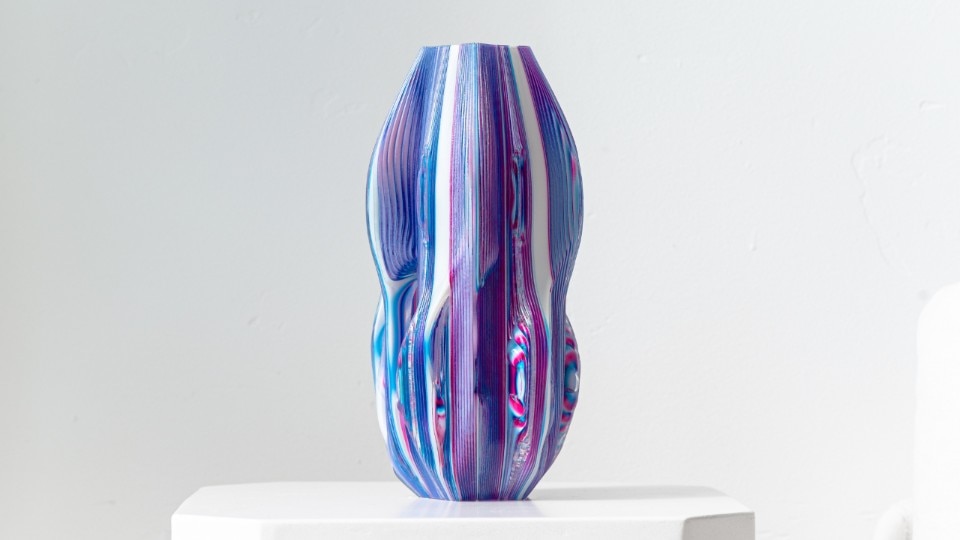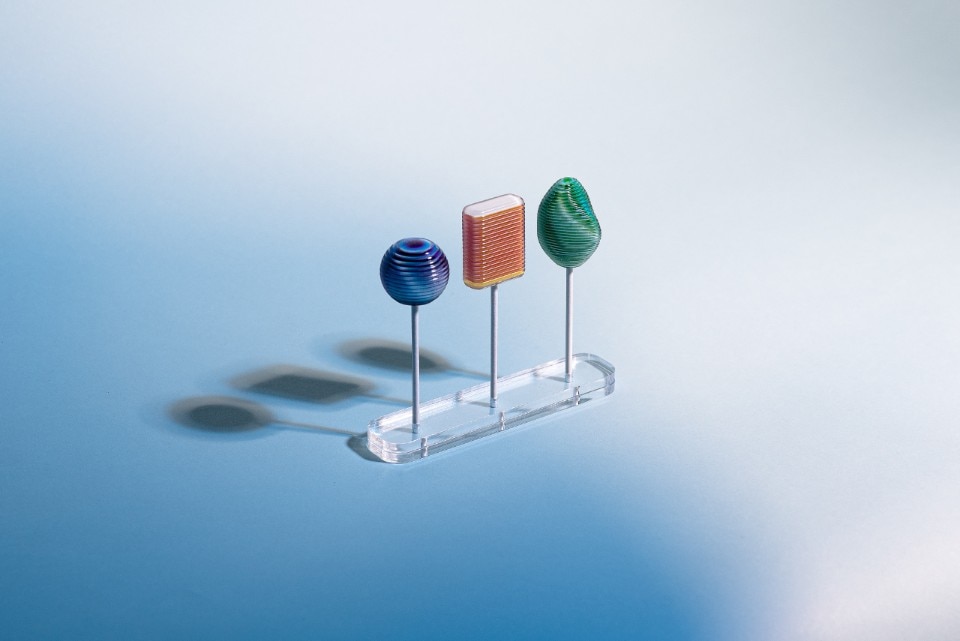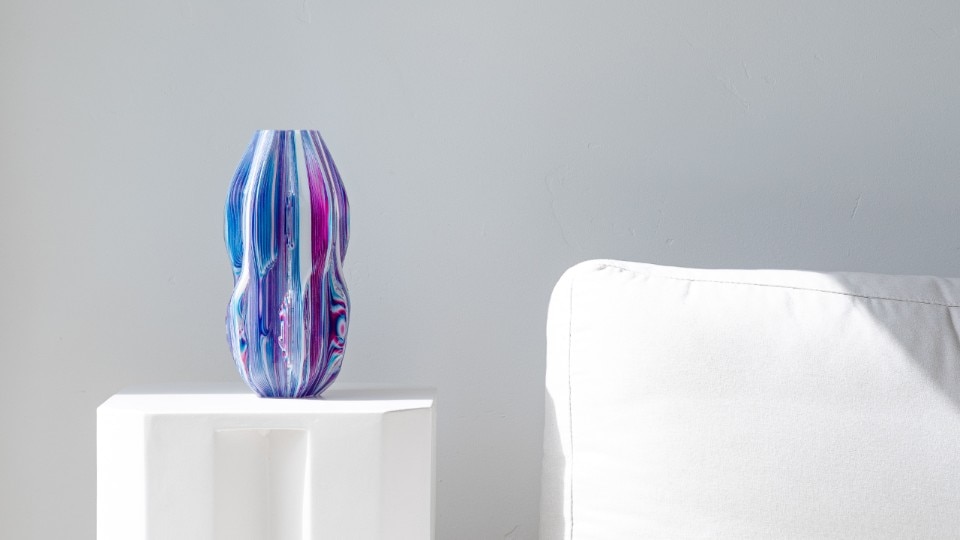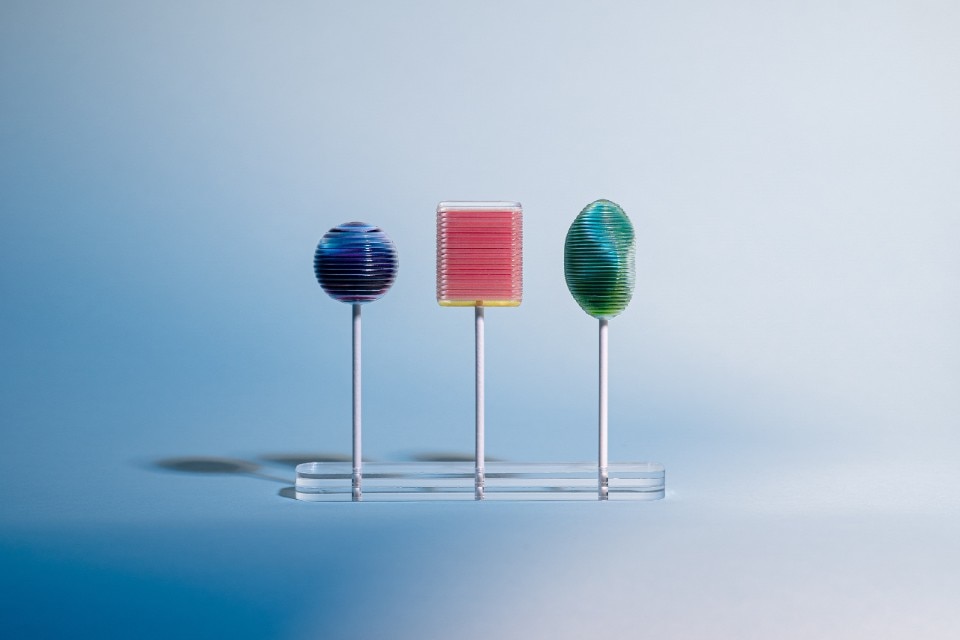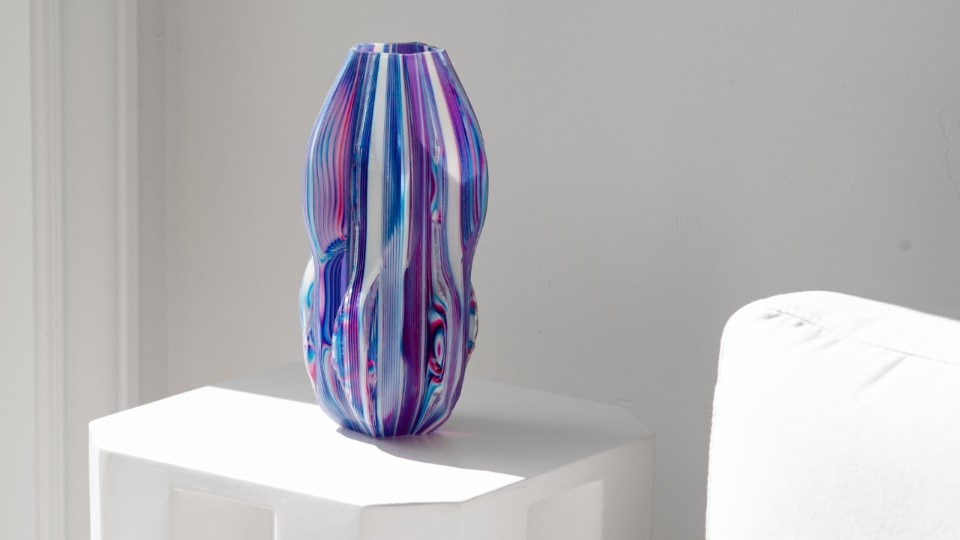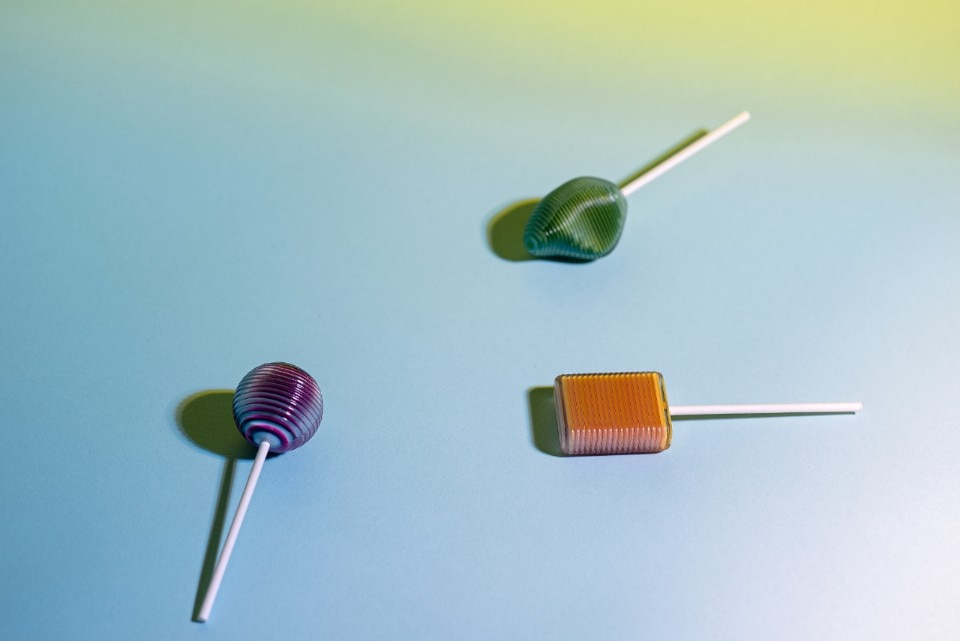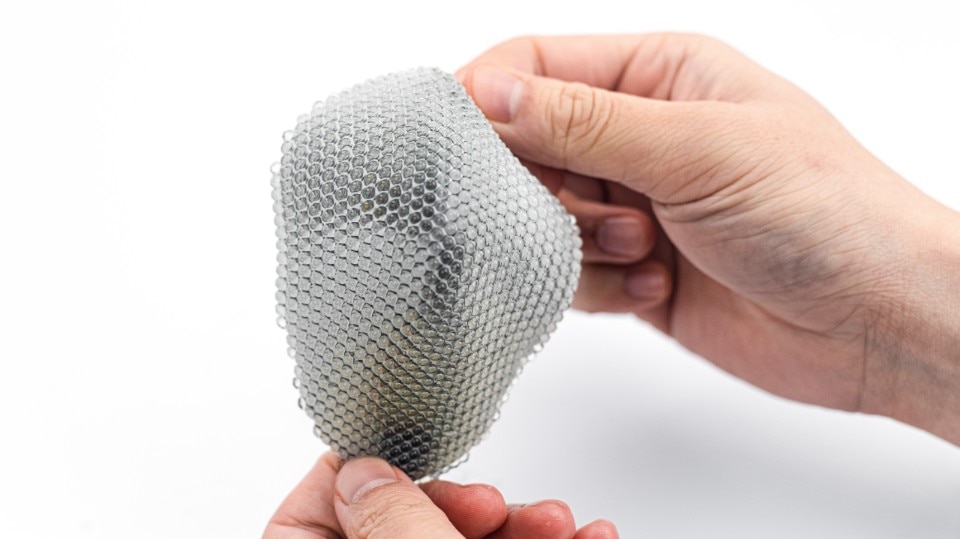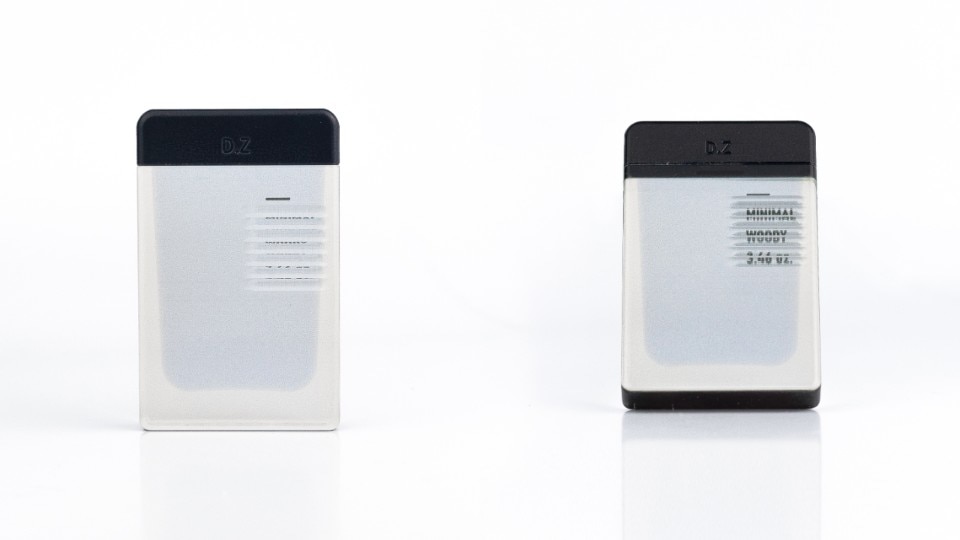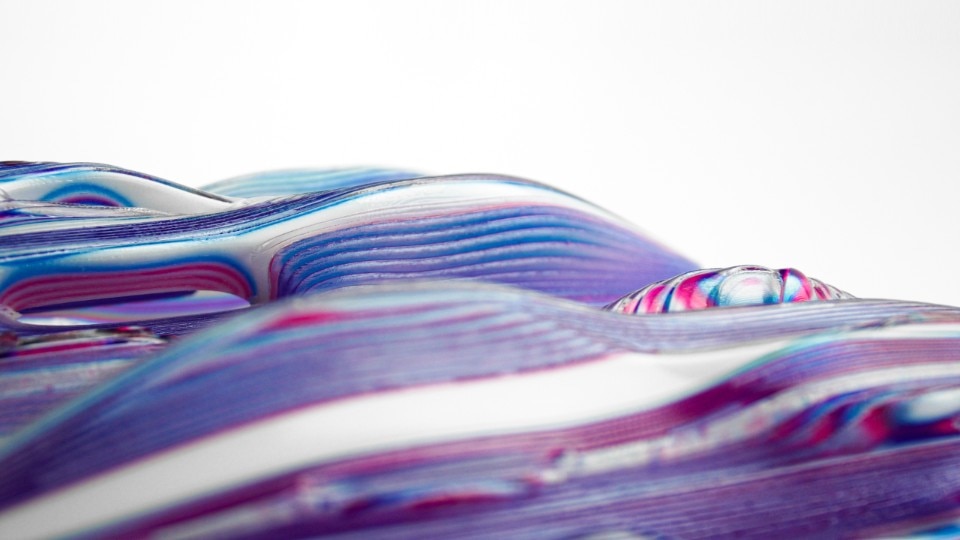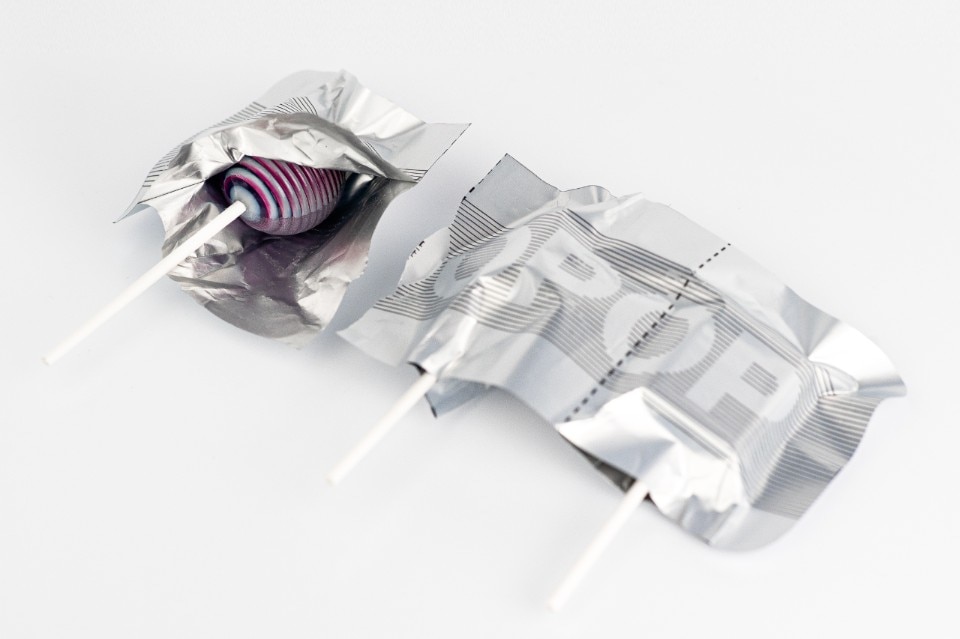Illusory Material is a new 3D printing computational method that lets industrial designer 3D-print objects with optical and physical properties that can’t be achieved with any other production method. The system combines multi-material 3D printing and volumetric design to manipulate and control the color, texture and refractivity of voxels in a material. The products created through this process can feature unusual optical qualities, such as the option to display visual information only when looked at a specific angle.
Illusory Material designers Jiani Zeng and Honghao Deng created some test products to show the possibilities of this technique. Nseen, for example, is a perfume bottle that appears entirely transparent, but can show information about the content when viewed from a different perspective. Loopop is a prototype for lollipop moulds that suggests the possibile application of this method in the food industry. Unream, a sculptural lamp, explores the options in the field of furniture design. The Illusory Material framework currently continues to be refined, in order to make it an accessible technique for designers exploring the possibilities of designing multi-material 3D printing object with peculiar, project-specific characteristics.


